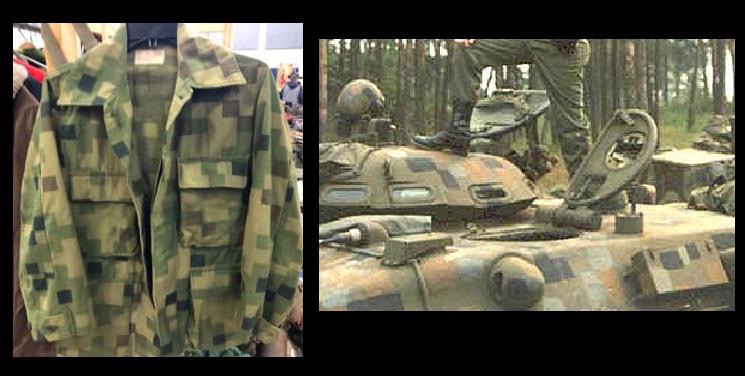this post was submitted on 22 Sep 2023
142 points (96.1% liked)
Mildly Interesting
16906 readers
271 users here now
This is for strictly mildly interesting material. If it's too interesting, it doesn't belong. If it's not interesting, it doesn't belong.
This is obviously an objective criteria, so the mods are always right. Or maybe mildly right? Ahh.. what do we know?
Just post some stuff and don't spam.
founded 1 year ago
MODERATORS
you are viewing a single comment's thread
view the rest of the comments
view the rest of the comments

My understanding of the Desert Storm digital camo is that it works because they were doing a lot of city fighting. Camouflage works by breaking up your silhouette against the background. Since there aren't really any straight edges in nature, they use rounded splotches for jungle warfare. Since there are a lot of straight edges in cities, they used straight edges for the splotches. If this camo was intended for jungle use, then it was probably a lot less effective than the traditional camouflage, which is probably why it didn't replace the organic camouflage.
I think you’re a bit turned around. The only grid pattern camouflage used in Desert Storm in any appreciable amount was Desert-Night. (Which I’m not actually sure was designed with digital aid or not). Desert-Night camouflage was intended to defeat older generation night vision by blending into the grain of older night optics. Essentially to hide people in the static.
Dual Tex was an earlier experiment where the straight shapes were a result of the primitive ways of arranging digitally assisted patterns. It was intended primarily for Europe, but more than that was a proof of concept of the macro/micro patterning technique which did eventually become standard. In the 1970s the ERDL patterns could be considered micro only, and the following “M81” US Woodland being a macro only pattern. Dual Tex had the idea of inserting a micro inside a macro without disrupting the macro’s effectiveness.
The straight edges have proven not to be much of a detriment, as the vast majority of digital personal camo use squares are a base shape. (Digital camo strictly speaking doesn’t need square pixels but for practical reasons usually uses them). Follow up digital pixel camos did try to find a sweet spot for pixel size, as pixels that are large will make the camo less effective up close, but pixels too small can result in “blobbing” which makes the wearer distinct at a distance.
While the US hasn’t adopted digitally aided pattern designs on vehicles, a number of countries or units in them have. Vehicle camo follows the same concept as personal camo, although intended for a longer range.